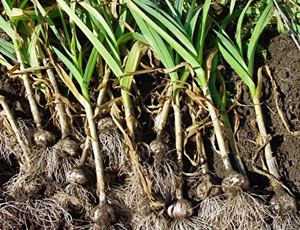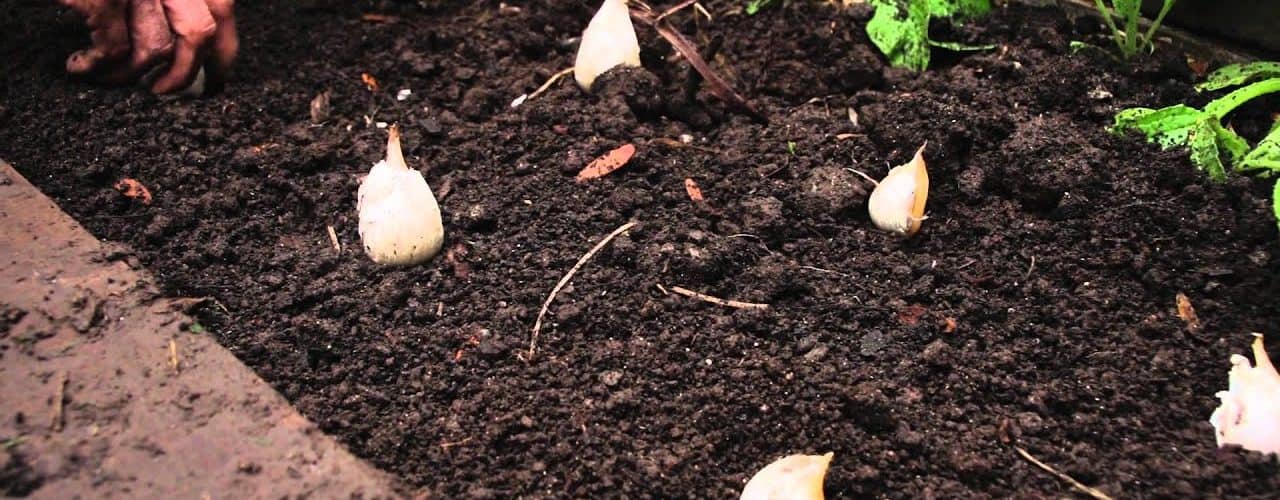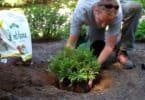
Garlic is cultivated from cloves planted in early spring or fall. There are more than 600 unique varieties of garlic, but artichoke softneck types are most frequently sold at grocery stores. Softneck garlic is easy to grow and has a long storage time making it popular for the produce market.
Contents
When to Plant Garlic
Garlic requires cool temperatures during the early stages of growth followed by warm temperatures while bulbing. To achieve these conditions, garlic cloves should be planted in early spring before the last frost or in fall after the first frost. Depending on your climate, garlic can be planted between March and May or in fall between September and November. Because garlic is slow-maturing, planting in fall gives the plants a good head start.
How to Prepare Garlic Cloves
Garlic cloves can be planted directly or peeled and soaked first. According to the leading garlic experts, removing the papery peel improves emergency by eliminating bugs or fungi present in the garlic skin. Removing the peel also shows any hidden damage. Wait until planting to separate cloves from the head. To pre-soak, prepare a solution of one quart of water and one teaspoon of baking soda. Peel cloves and cover with baking soda solution. Soaking should be done outside or in the garage where the smell won’t be so bothersome. After soaking overnight, place cloves in undiluted vodka for three to five minutes to kill any remaining pathogens.
Planting Garlic Cloves
Garlic cloves should be planted with the pointed end up. Peeled and unpeeled garlic cloves should be planted two inches deep and spaced six to eight inches apart. To maximize yields, garlic can be planted in rows three or four cloves wide with eight inch spacing in every direction. Mulch beds with a four to six inch layer or straw blended with grass clippings. Emergence takes place in one to two months depending on the temperature. If there is no emergence, peek under the mulch too see if shoots are trapped under the compacted straw. In some cases, garlic won’t emerge until spring.
Growing Garlic
In spring, keep the mulch on to conserve moisture, feed the growing plants, and inhibit weeds. Water and fertilize regularly until temperatures rise. In June, hardneck garlic and some stressed softneck varieties produce a curling, serpentine flower spike called a garlic scape. To encourage bulb development, scapes should be clipped when nine to ten inches long. Scapes can be used as a substitute for green onions in salad dressing, stir-fries, and soups.
Harvesting Garlic
Garlic can be harvested as soon as plants begin to dieback until five green leaves remain. After that time, the bulbs will begin to separate from the head affecting the storage quality. Depending on your climate, garlic will be ready for harvest in late June or July. For spring-planted garlic, the harvest may begin in August. Never pull the garlic out by its stem, instead gently dig it out of the ground and brush loose soil away from the bulbs.
Storing Garlic
After harvesting, garlic plants should be dried for four to six weeks. Plants can be hung in bundles or laid on screens in a dry, airy place. After one month, clip the roots and garlic stems leaving one and one half inch to two inches of stem intact. Garlic keeps well under common household conditions. For the longest storage time, keep garlic in a place where the temperature remains at or below 70 degrees. With care during the growing and storing process, garlic will easily keep for eight to ten months providing cloves for next year’s crop.
Related Video:
Planting Garlic
<>
Related Resources:
University Of Minnesota Extension: Growing Garlic
<>






